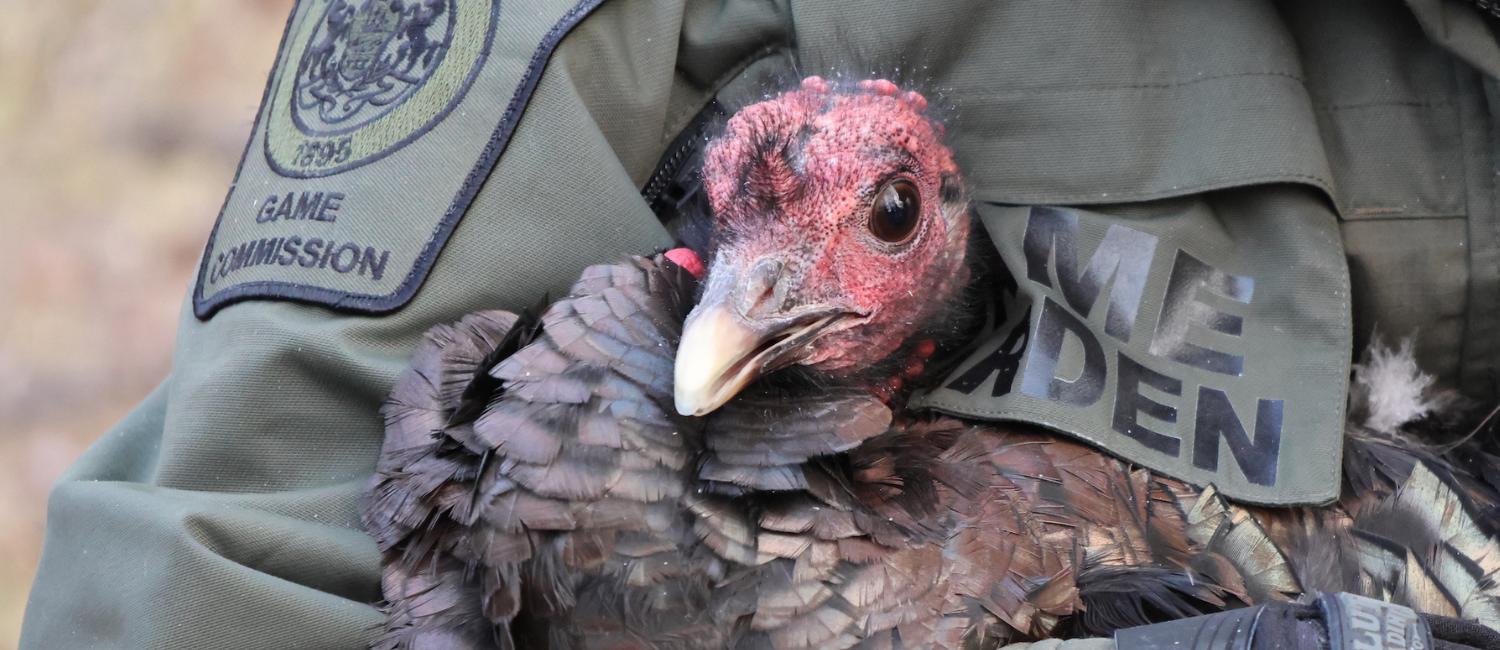 A game warden with the Pennsylvania Game Commission holds a wild turkey during a turkey trapping in northeastern Pennsylvania. Also in attendance were people from Penn Vet's Wildlife Futures Program: Lauren Maxwell, wildlife health technician, and R. Scott Larsen, wildlife veterinary liaison. (Image: R. Scott Larsen/Wildlife Futures Program)
A game warden with the Pennsylvania Game Commission holds a wild turkey during a turkey trapping in northeastern Pennsylvania. Also in attendance were people from Penn Vet's Wildlife Futures Program: Lauren Maxwell, wildlife health technician, and R. Scott Larsen, wildlife veterinary liaison. (Image: R. Scott Larsen/Wildlife Futures Program)
Known to affect domestic turkeys in the U.K., Austria, the Netherlands, and Israel since the 1970s, lymphoproliferative disease virus (LPDV) was not recognized in wild turkeys in North America until 2009, making this retrovirus that results in organ and skin tumors relatively new to researchers.
Erick Gagne, assistant professor of wildlife disease ecology at the University of Pennsylvania School of Veterinary Medicine, says the disease can cause cancer in some cases. But the prevalence in Pennsylvania wild turkeys, population-level impacts, and co-infection with other diseases—such as reticuloendotheliosis virus (REV)—remain unknown. He and other researchers from the Wildlife Futures Program at Penn Vet are working to answer these questions.
Gagne and Eman Anis, assistant professor of microbiology at Penn Vet, are leading the Wild Turkey Health Project, Penn’s contribution to a larger, multi-year turkey monitoring study in collaboration with Penn State and the Pennsylvania Game Commission. To analyze movement data and habitat use, Game Commission researchers are putting GPS trackers on turkeys, which provide location and movement information such as when a bird is nesting or has died.
Continue Reading on Penn Today!

